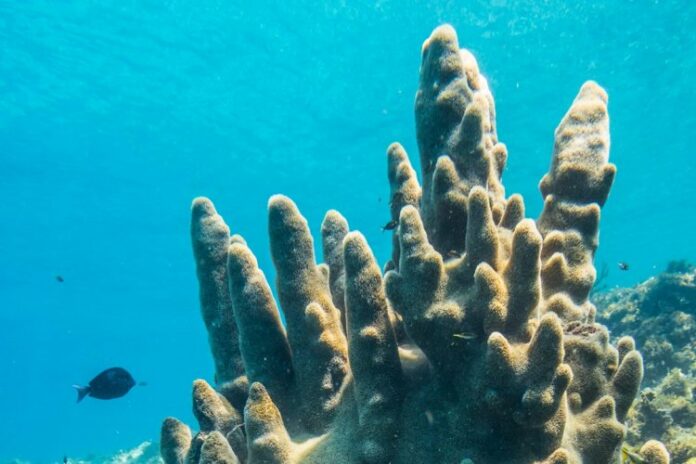Experts have warned the pillar coral, found throughout the Caribbean, is at a higher risk of extinction as a result of unsustainable human activity.
It has moved from Vulnerable to Critically Endangered on the International Union for Conservation of Nature’s (IUCN) Red List of Threatened Species, after its population shrunk by over 80 percent across most of its range since 1990.
An international team of researchers, including from the University of Portsmouth, were tasked with evaluating the global extinction risk of reef-building corals in 2018.
Dr Francoise Cabada-Blanco, School of Biological Sciences at the University of Portsmouth, said:
“With the rapid degradation that reefs have suffered worldwide due to massive bleaching events, it was imperative to update our knowledge about how the populations of individual reef-building coral species have changed.”
Dr Francoise Cabada-Blanco, from the School of Biological Sciences at the University of Portsmouth, said:
“The extinction risk of reef building corals in the Caribbean had not been updated since 2008. With the rapid degradation that reefs have suffered worldwide due to massive bleaching events, it was imperative to update our knowledge about how the populations of individual reef-building coral species have changed.
“The pillar coral is a good example of how species-focused research on rare species is crucial to assess their extinction risk and highlight the urgency with which conservation action is needed.”
The IUCN SSC Coral Specialist Group found bleaching caused by sea surface temperature rise — as well as antibiotics, overfishing, fertilisers and sewage running into the oceans — have ravaged their numbers over the past four years.
The most urgent threat is the Stony Coral Tissue Loss Disease, which emerged in 2014 and is highly contagious, infecting between 90 and 100 metres of reef per day.
“The pillar coral is just one of the 26 corals now listed as Critically Endangered in the Atlantic Ocean, where almost half of all corals are now at elevated risk of extinction due to climate change and other impacts,” explained Dr Beth Polidoro, Associate Professor at Arizona State University.
“These alarming results emphasise the urgency of global cooperation and action to address climate change impacts on ocean ecosystems.”
The IUCN’s Red List is the world’s most comprehensive information source on the global extinction risk of animals, fungi and plants. Developed over 50 years ago, it influences policy development and priority setting at a global, regional, and national level.
The list has now been updated to include 150,388 species, of which 42,108 are threatened with extinction. Over 1,550 of the 17,903 marine animals and plants assessed are at risk of extinction, with climate change impacting at least 41 percent of threatened marine species. Populations of dugongs and abalone shellfish are also under threat and could disappear forever.
Reacting to the latest updates, IUCN Director General Dr Bruno Oberle, said:
“The IUCN Red List update reveals a perfect storm of unsustainable human activity decimating marine life around the globe. As the world looks to the ongoing UN biodiversity conference to set the course for nature recovery, we simply cannot afford to fail.
“We urgently need to address the linked climate and biodiversity crises, with profound changes to our economic systems, or we risk losing the crucial benefits the oceans provide us with.”



